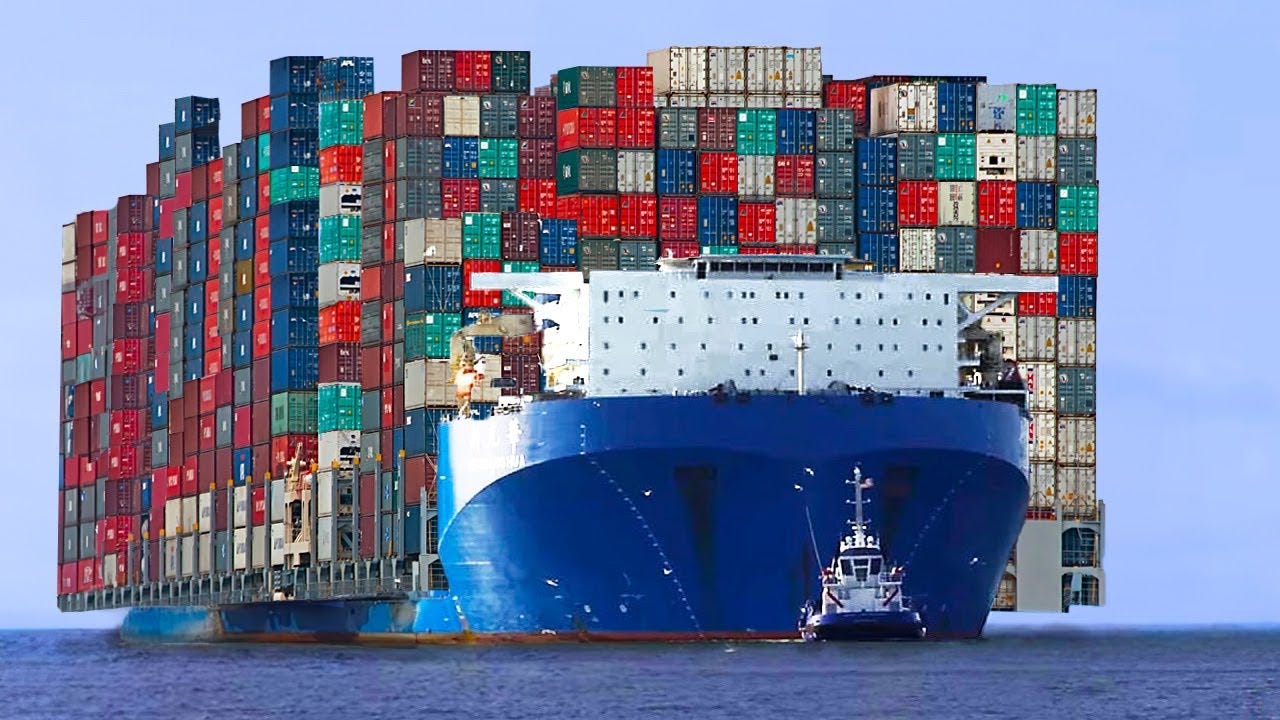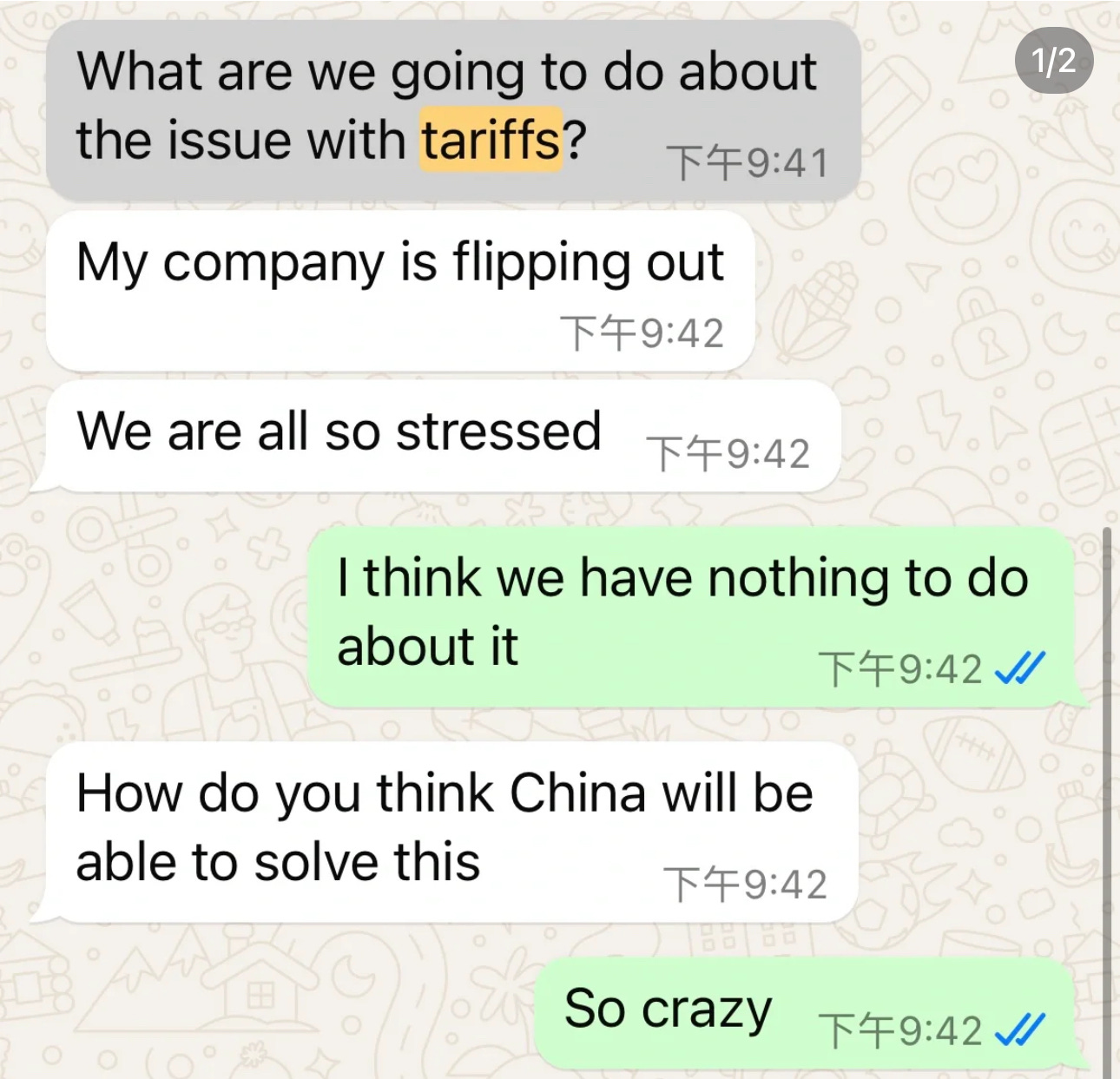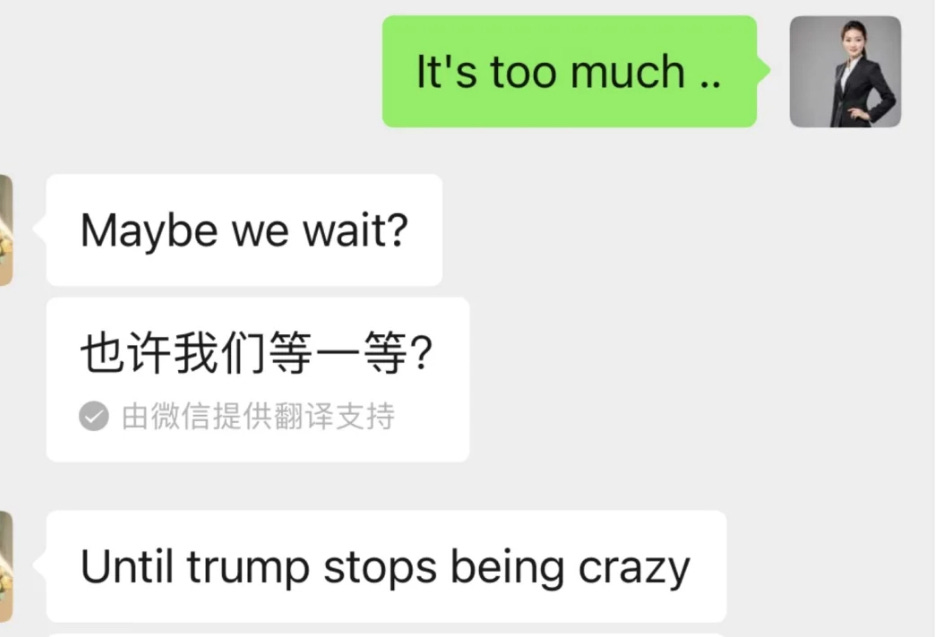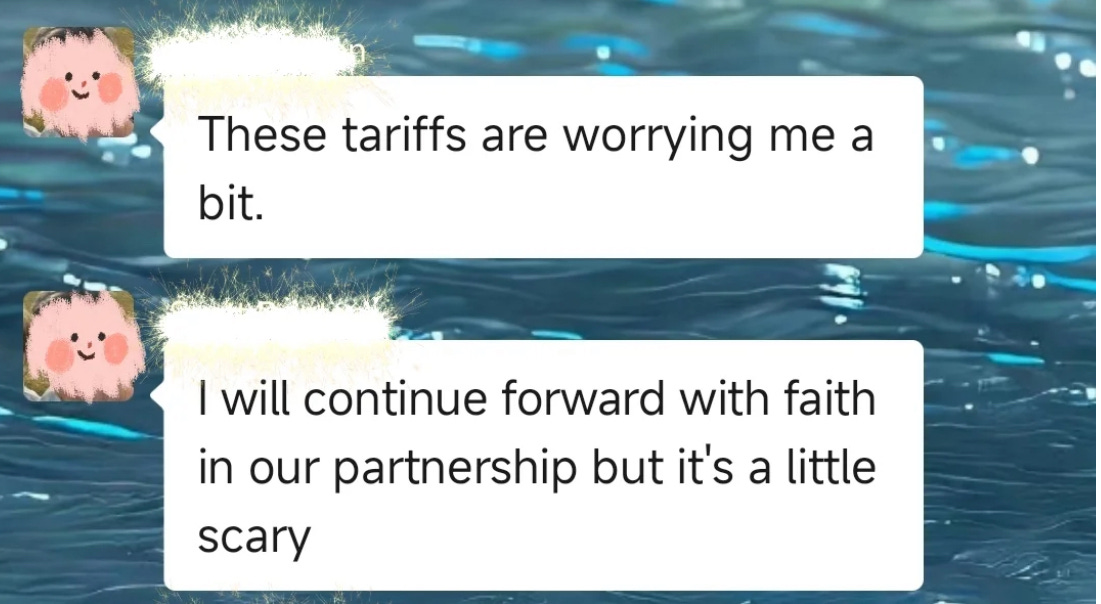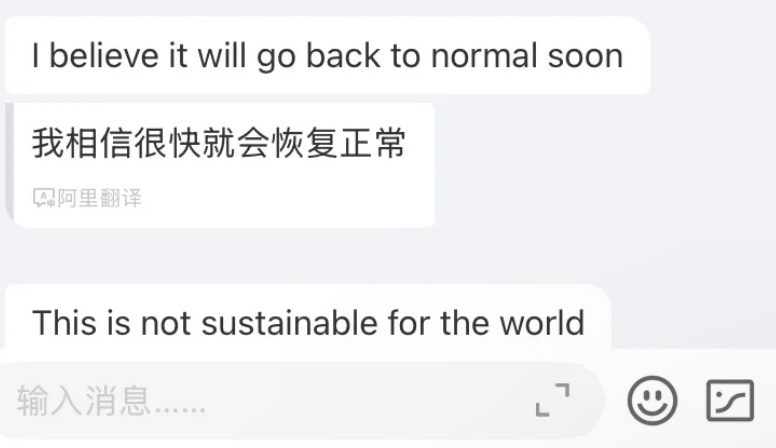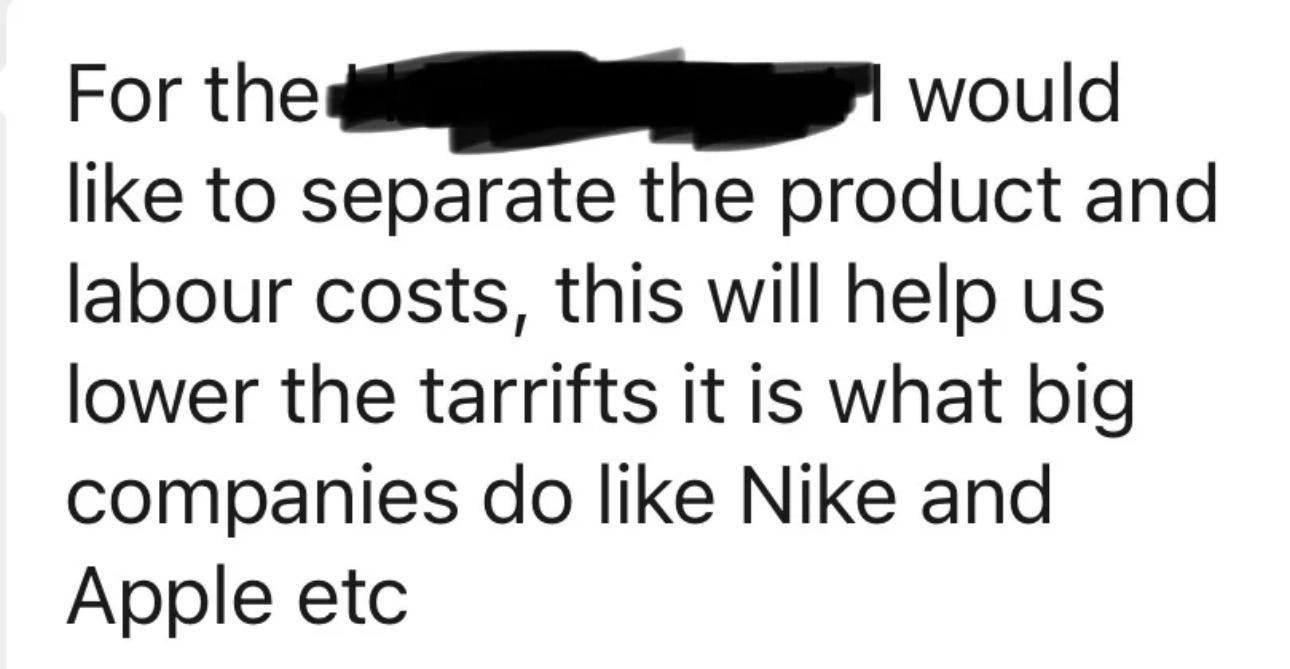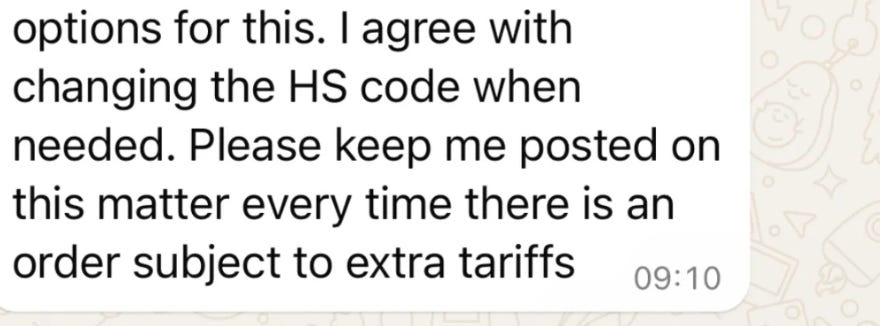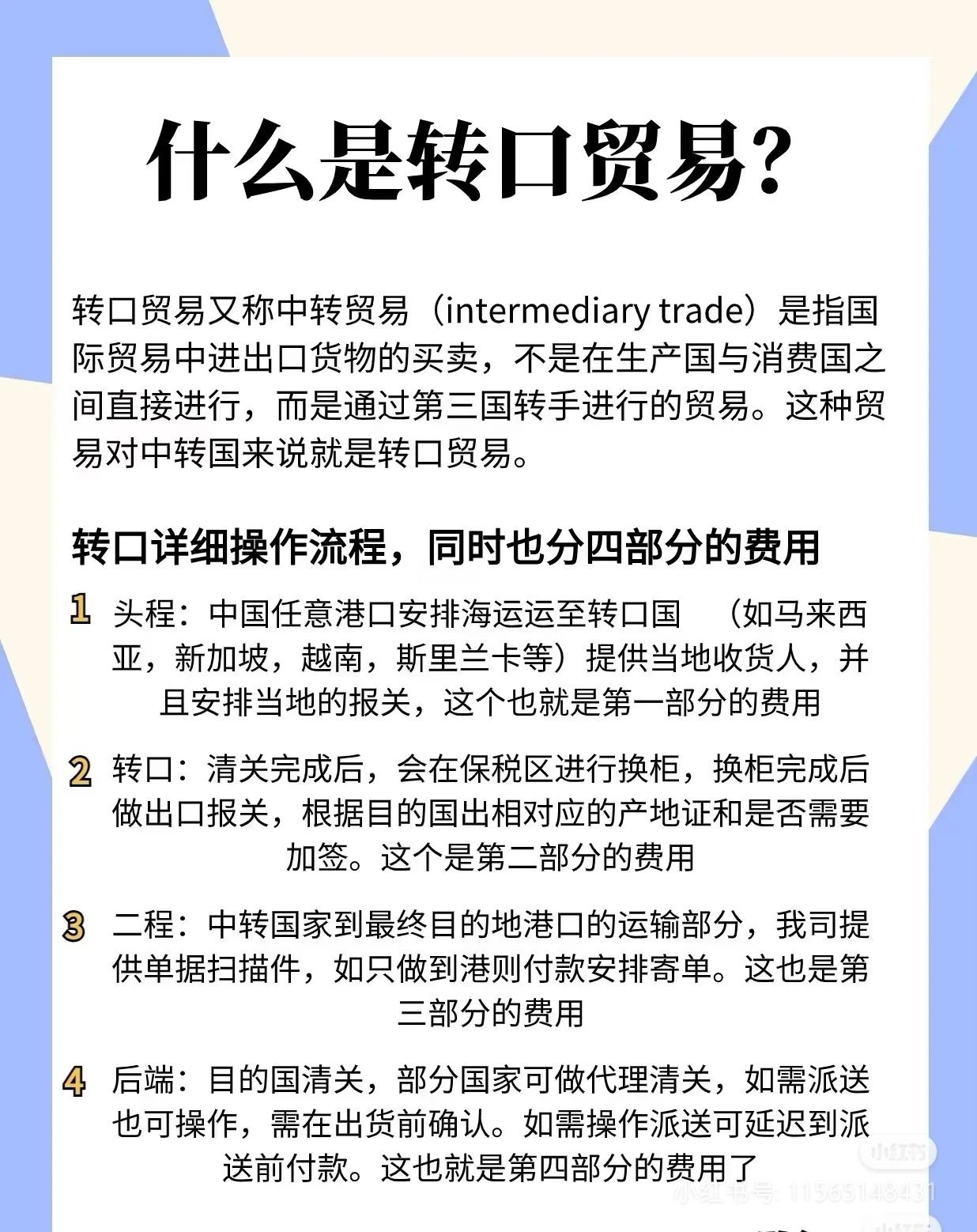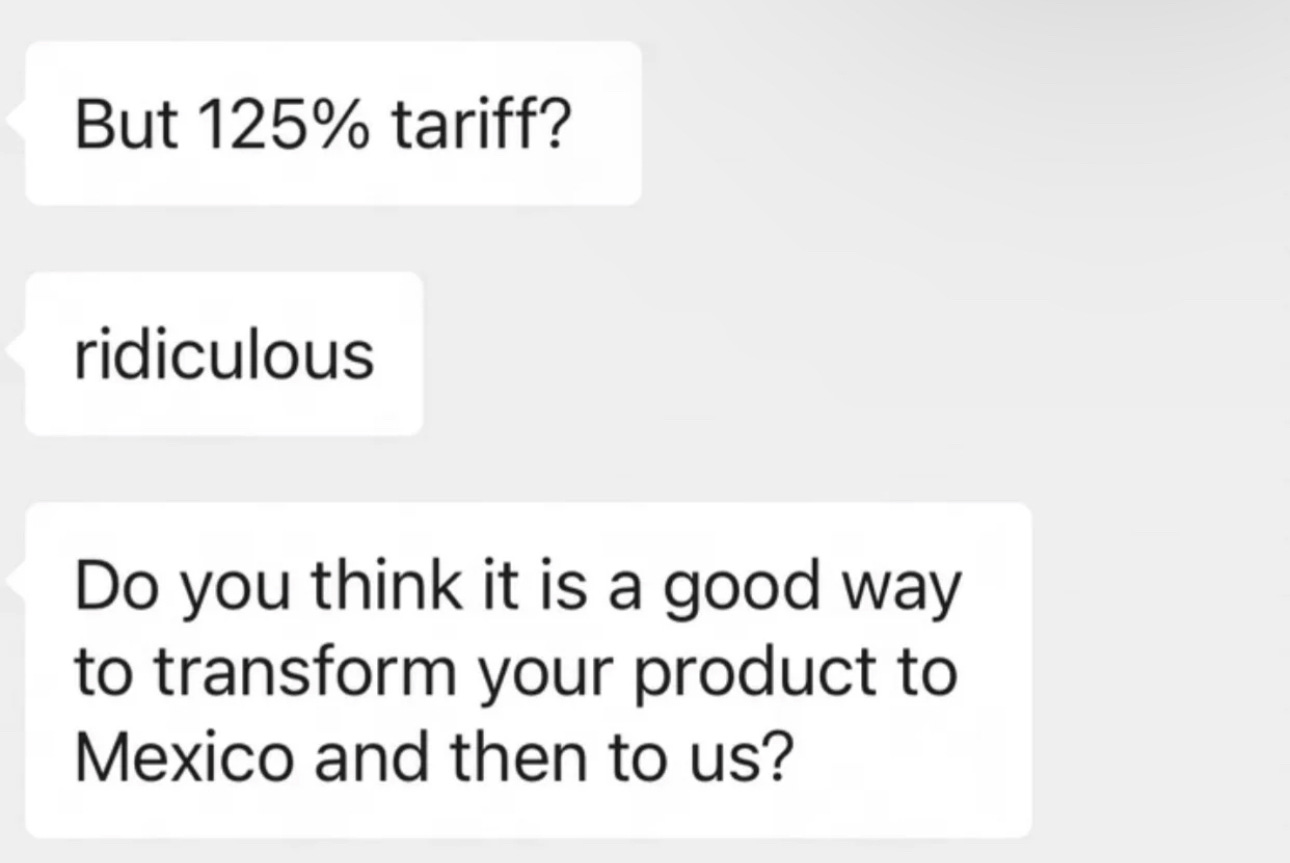Live from the Trade War: How Suppliers are Outsmarting 'Liberation Day'
Inside the grey world of logistics and third-country transshipment
This is part one of a new series , “Live from the Trade War”, following the fallout of Liberation Day from on-the-ground in China. Expect more interviews with Chinese suppliers, logisticians, and scholars. Image source: Youtube
In 2020, the world’s supply chains were crippled by an Act of God from the deadliest disease since the Spanish Flu. Today, 5 years later, those same supply chains sit breathlessly waiting on the arbitrary dictats of a man who could, and usually does, change his mind on a dime.
Unlike a typical cyclical recession with an irreversible crash, this could theoretically end at any moment with one executive order (probably not, though). This simple fact is driving strange, erratic stock market behavior and colors the strategic decision making of hundreds of thousands of businesses navigating Liberation Day.
Nobody wants to make an extreme or radical investment decision based on a situation that could change overnight. A commitment for a $10 million domestic plant could turn worthless before the ink is dry if tariffs are cut as quickly as they were raised. More than anything else, this is the mindset shared by Chinese suppliers and American importers caught in the line of fire: ‘Today there are tariffs, tomorrow there could be none, and the day after there could be even more. Just wait and see.’
So, what is everyone doing? What’s everyone’s plan to weather the storm until Trump, hopefully, blinks? Is everyone really going to stop shipping Chinese goods to the U.S?
Well, through interviews with several Chinese suppliers and freight forwarders as well as scouring candid online conversations between frustrated employees, here’s what I’ve found. On both sides of the Pacific, hundreds of thousands of people in a flurry of WeChat messages and emails are constructing new strategies, legal and illegal, to mitigate, outlast, or out-smart America’s tariffs in the hopes they are temporary. Through countless micro-interactions, the plumbing of global trade is limping, bit by bit, to the finish line.
The Base Case: Frontload and Pray
So, you have a multi-million-dollar business sourcing widgets from China and selling them on Amazon. What do you do the day after 145% tariffs?
If you’re smart, you’ve been frontloading inventory for at least a month now. A Chinese supplier told me that they’ve been prioritizing and fast-tracking orders from U.S clients since Trump announced the first round of 20% tariffs on China. Imports at major container ports have been running hot since at least February and the National Retail Federation confirmed retailers have been pro-actively stocking up on inventory for months. The takeaway here is that the short-term inflationary impacts of tariffs, which are still going to be high, are likely to run even higher as inventory stockpiles draw down.
But let’s say you didn’t stock up, what’s next? First, you take a look at your profit margins. As loads of young TikTokers are finding out, some products – usually from small and medium sized brands – are sold at outrageous markups that can take the hit and keep going. Two Chinese firms servicing different niches informed me a very small portion of their American customers have been able to eat the cost and keep ordering.
However, the vast majority of companies, especially big box retailers, don’t have these margins. So, they have to make a judgement call: keep ordering at a loss to maintain the supplier relationship and keep your shelves stocked, or pause and risk shortages on 50-100% of your inventory?
According to a Chinese freight forwarder, upwards of 70% of his clients have opted to completely pause shipments from China. Five and Below is the most public example of this trend, completely halting orders from China even though Chinese products make up 60% of their total cost of goods. This isn’t the only major retailer to take this route; a factory owner in Guangzhou told me Dollar Tree completely cancelled their contract. Corners of Little Red Note where exporters gather to commiserate (#外货) are a bloodbath of private conversations with panicked American importers.
But, that’s not the whole story. Previously stable, profitable business relationships are sticky, nobody wants to kill the golden goose. American importers, from my conversations with Chinese suppliers and the private conversations I’ve seen posted online, are stubbornly refusing to let go. Everybody thinks (or naively hopes…) this will, eventually, go away.
This hesitancy to bail and commitment to the relationship is shared by Chinese suppliers who’ve based large portions of their income on products made for American tastes. Not every good is globally fungible, retooling your production lines to swap from custom-made goods for American buyers to new styles for new customers in new countries costs time and money. “Some factories have stopped production for U.S-ordered product lines, but not most,” a representative at a Shenzhen supply chain firm told me. After asking if any of their Chinese clients are preparing to start shifting production abroad, a different logistics firm emphasized their clients are in a “wait and see state” and “have no such plans yet.”
So, if you think the only thing stopping your multi-million dollar business relationship from resuming is temporary, what do you do? Everything you can. At 145% tariff rates, essentially embargo-levels, legitimate bilateral trade is going to crater. But here is where the murky, grey, and sometimes illegal world of logistics comes in for companies willing to take the risk.
You hear from your buddy that his widget company just got a month’s worth of stock in at only a 10% tariff rate – how? Your number one competitor on Amazon hasn’t moved their prices up even one bit – what’s going on? Well, if they haven’t already, your freight forwarder will probably tell you.
The Gray Zone
The first mitigation strategy is, at this point, already endemic in the industry. A well-connected Chinese importer stated publicly that the average declared cost of goods on a typical container from China to the U.S is $5,000 - $10,000. This is implausibly low, to say the least. If you’ve ever tried to order in bulk off Alibaba, you already know why – your supplier will always ask if you want to lower the declared cost of goods at customs to reduce your tariff burden. Thousands of companies are having these secretive conversations right now, hoping Customs and Border Control isn’t looking over their shoulder.
Now, while this is illegal, that’s never stopped anybody. But what if your products are obviously way too expensive for a customs agent to think its worth $10 instead of $1000? More likely than not, your Chinese supplier has been absolutely inundated with solicitors from third-country transshipment agents, but first let’s go over why transshipment is even possible.
After the first round of tariffs on China in 2018, a tidal wave of investment flowed into Southeast Asia, particularly Vietnam, from Chinese firms looking to mitigate tariffs by shifting their supply chains to neighboring low-tariff states. The effect was immediate, In 2019 alone, Vietnamese exports to the U.S increased by 35%. Chinese factories linked to these supply chains shifted into exporting raw or intermediary goods for final assembly in Vietnam, earning these products Vietnamese tariff rates rather than the much-higher Chinese rates.
Not only do most serious discussions of the U.S – China Trade War mention this, many expect a new wave of trade and investment to start getting rerouted instantly. However, this perspective is missing one thing: uncertainty, in the short term, is an investment killer. The LA Times is reporting that a half-way completed factory park in Vietnam has essentially been halted since Liberation Day, with 40 firms in talks to join now pausing deliberations. This matches the perspective of a freight forwarder who told me they expect Chinese investment in Southeast Asia to decline for now, not rise.
Forget investing in Vietnam, why don’t Chinese factories facing high tariffs just switch to exporting to already existing Vietnamese assembly plants given that Trump has temporarily cut Vietnam’s rate to 10%? As I said earlier, factory goods aren’t necessarily fungible. A large home goods factory representative explained to me that, while they were able to switch to production of intermediary goods for factories in Vietnam after Liberation Day, this was only possible because they already produced goods at every level of the value chain – raw, intermediary, and finished – and were interlinked with Vietnamese assembly plants. If you’re not already in this game, it’s a bit too late to join in. This is where transshipment comes in.
The services transshipment agents offer is simple. They ship a container of your products from China to a third country with lower tariff rates, such as Vietnam, swap out your products to a different container, change the country of origin to whatever the third country is (“Vietnam”), ship it to the U.S, and then get slapped with 10% tariffs instead of 145%. The recent rise of Chinese-led manufacturing in Southeast Asia is important here because it provides a plausible cover for transshipped items; it’s way easier to ship goods with doctored paperwork under the radar if it’s from a country with an existing network of Chinese factories.
Advertisements for these are everywhere.
And American importers are more than aware these options exist.
Is it illegal? Absolutely. Do people still do it? Well, that goes without saying. However, compared to just adjusting down your cost of goods, there seems to be real resistance this method from Chinese suppliers. Of all the factories and freight forwarders I talked to, none of them offered this service and all of them discouraged doing it. Most seemed to believe that transshipment agents were generally unreliable and the odds of getting caught were high. That being said, I still expect this will be a major conduit for Chinese goods as long Customs and Border Control is unable to properly inspect all imports coming into the U.S.
Conclusion
Technical discussions on tariff avoidance aside now, how do we interpret all of this?
For now, this is the time of limbo. Every boardroom in America is running the numbers on re-shoring, near-shoring, or keeping production in China depending on whether, when this is all over, Trump opts to keep tariffs high for all nations, just China, or no one at all. Not to be out-hustled, Chinese factories are re-evaluating their linkages with Southeast Asia and tapping overseas networks to prep for an export push into Europe and the developing world. Some companies are assuredly already taking action – Apple is moving aggressively to shift iPhone production from China to India – but the floodgates of investment won’t come until clear, final direction comes from the White House.
Until then, U.S buyers and Chinese suppliers are stuck in an awkward space of trying to maintain good relationships that could end tomorrow or roar back in a month. They’re reassuring each other, commiserating, venting, and, if they have the risk appetite, diving into the underbelly of the logistics world.
All that being said, the most striking part of all of these various strategies, whether front-loading orders and praying for a quick war or good old-fashioned smuggling, is how temporary they are. If you think this trade war is nowhere near ending, then the only realistic conclusion is that our economy is currently walking on a knifes-edge based on a collective delusion.
A delusion that he’s not that crazy, that “sanity” will come back (hey, anyone remember CHIPS?), and that somebody will figure this out and put economic expertise back in command. I’ll leave it up to you to decide what you think about that, I don’t really care for Trump or sanity and economic expertise.


